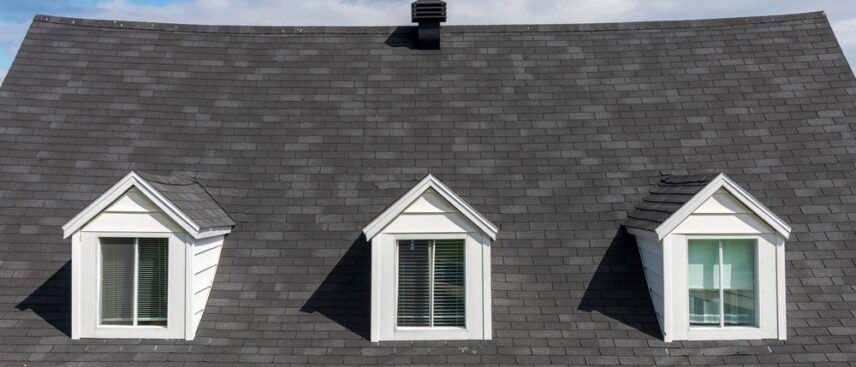Architectural Digest’s chart for 2024 reveals that the average shingle lifespan for wood shakes starts at a minimum of 15 years. Depending on climate and maintenance, a roof of wood shakes lasts an average of 40 years. A roof of architectural asphalt shingles offers a lifespan of 30 years.
With such long lifespans, homeowners may only need to replace their roofs once. That’s why you will want to be sure you are making the best choice for your home, climate, and budget. This guide to asphalt, wood, and synthetic shingles provides the necessary information.
Types of Shingles Materials
When choosing shingles, you will find three types:
- Asphalt shingles
- Wood shingles
- Synthetic shingles
Asphalt Shingles
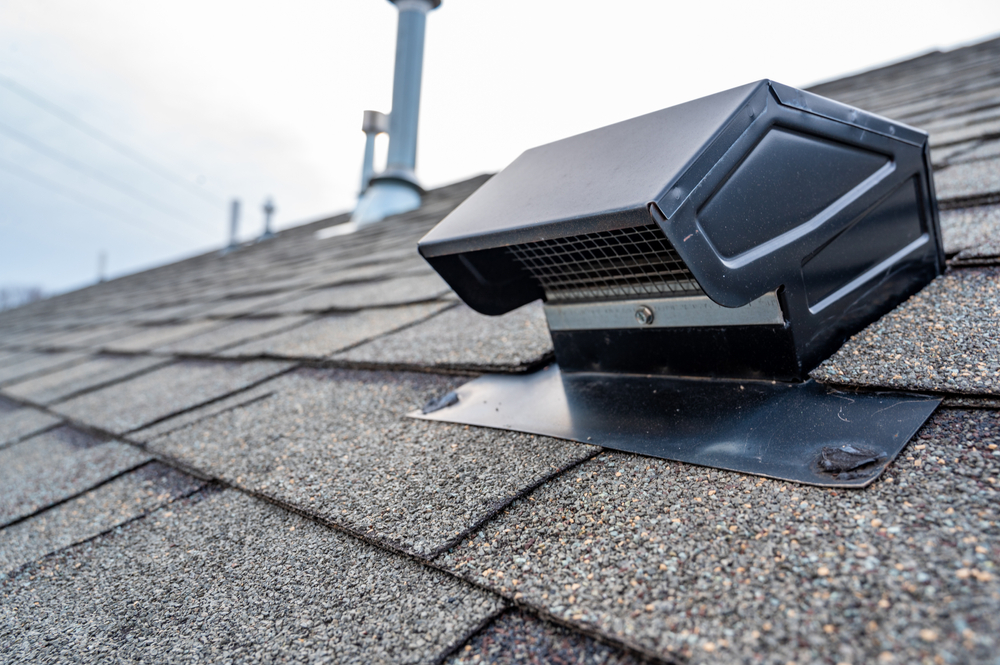
Homeowners commonly choose asphalt shingles for the variety of colors and looks available, their low cost, and their ease of installation and replacement. For 2024, This Old House lists the average cost of asphalt shingles as being between $3.50 and $5.50 per square foot.
Materials Used in Asphalt Shingles
Asphalt shingles consist of a base of fiberglass or organic cellulose felted with a layer of asphalt mixed with granulated minerals. The asphalt-mineral layer provides the shingle with its color and varying degrees of waterproofing, UV resistance, and fire resistance. The installation of asphalt shingles in overlapping layers adds to their waterproof nature.
Types of Asphalt Shingles
Asphalt shingles come in two types: three-tab or strip shingles and architectural shingles.
The three tabs of strip asphalt shingles offer a smooth, classic, traditional look that enhances most home and roof styles. However, three-tab asphalt shingles lack the thickness of architectural asphalt shingles. So, they have a shorter lifespan of 15 to 20 years.
Architectural asphalt shingles provide a textured appearance. Although thicker than three-tab asphalt shingles, architectural shingles remain comparatively affordable.
Advantages of Asphalt Shingles
Affordable asphalt shingles offer a wide range of colors and a smooth, classic look that complements many homes. Thicker, architectural asphalt shingles closely mimic the look of more expensive wood shakes or slate. They offer the look of slate without the weight and the need to reinforce the roof.
Disadvantages of Asphalt Shingles
Asphalt shingles are subject to being lifted and torn off by high winds. In addition, frequent cycles of freezing and thawing, hail storms, and ice dams cause these shingles to crack. They also can fade under excessive sunlight. These characteristics make them more suitable for moderate rather than extreme climates.
For those looking for an affordable roofing material but with concerns about the environment, the Asphalt Roofing Manufacturers Association recommends recycling asphalt roofing shingles.
As mentioned earlier, organic asphalt shingles made with cellulose are available.
Maintenance of Asphalt Shingles
You can extend the life of asphalt shingles by keeping gutters and downspouts clear, pruning back overhanging tree limbs, and regularly inspecting your roof for moss, debris, and necessary repairs.
Also, manufacturers offer additional coatings for architectural asphalt shingles that provide features such as resistance to mold.
These coatings and the thickness of architectural shingles extend their average life expectancy to around 30 years. According to This Old House, roofs of architectural shingles may last as long as 50 years. However, roofs in warmer climates may need more frequent replacement.
Wood Shingles
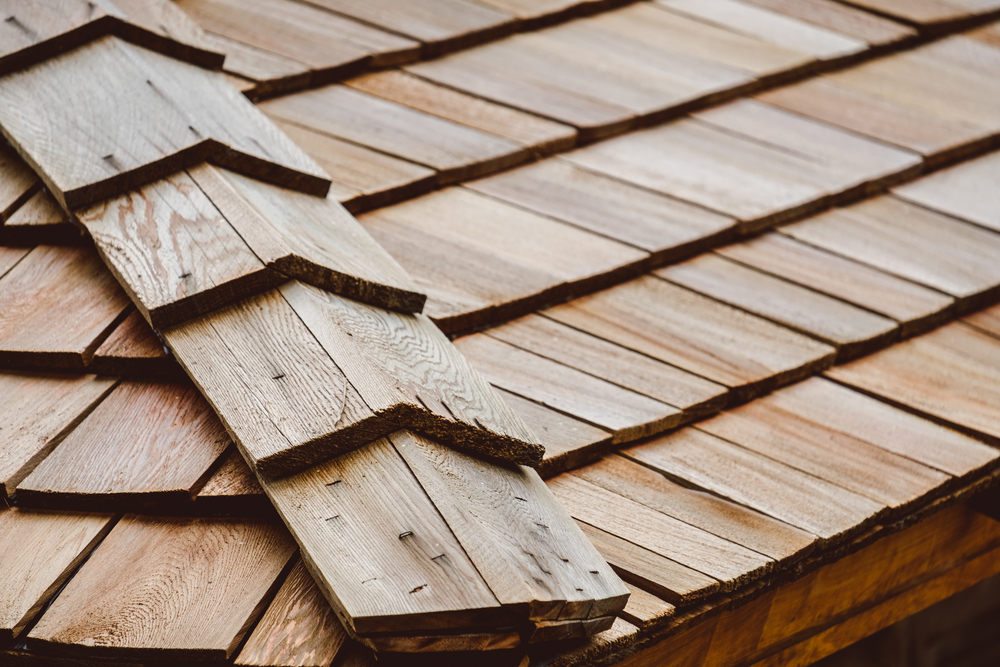
Like asphalt shingles, wood shingles come in two styles—wood shakes and wood shingles. Both wood shingles and wood shakes complement rustic architectural styles. As of 2024, This Old House lists the average cost of non-cedar wood shingles as being $5.25 per square foot and the average cost of cedar shakes as being shingles as being $4.80 per square foot.
Differences Between Wood Shakes and Wood Shingles
Wood shakes are thicker than wood shingles because the wood is hand-split rather than cut. The split wood gives each wood shake a different shape, hue, and texture. As a result, wood shake roofs have a distinctive, rougher, more rustic look.
Wood shingles have a more precise cut than shakes, giving a smoother, more uniform look than wood shakes.
Wood shakes are most commonly made of white cedar, but they can be made of other woods. Wood shingles may be made of cedar, redwood, cypress, or treated pine.
Fire Resistance
Wood shingles and shakes are not fire-resistant or recommended for areas prone to wildfires. Architectural Digest states that a composite roofing system and extra fireproofing treatments are necessities for wood shingle roofs to meet the fire rating codes in wildfire-prone areas.
Maintenance of Wood Shingle and Wood Shake Roofs
Moderately durable, environmentally friendly wood shingles and shakes withstand hail impacts and high winds well. They do, however, fall victim to excessively rainy or damp climates.
As with asphalt shingles, keeping gutters and downspouts clear and removing debris from your roof extends the life of your wood shingles and shakes. Regular power washing also helps.
Roofs of wood shingles and shakes need to be painted or treated every one to five years with a solution that provides water resistance and inhibits the growth of algae and fungi. Apply a sealant after treatment. Without maintenance, the shingles or shakes can break down, crack, leak, grow algae, or rot.
Synthetic Shingles
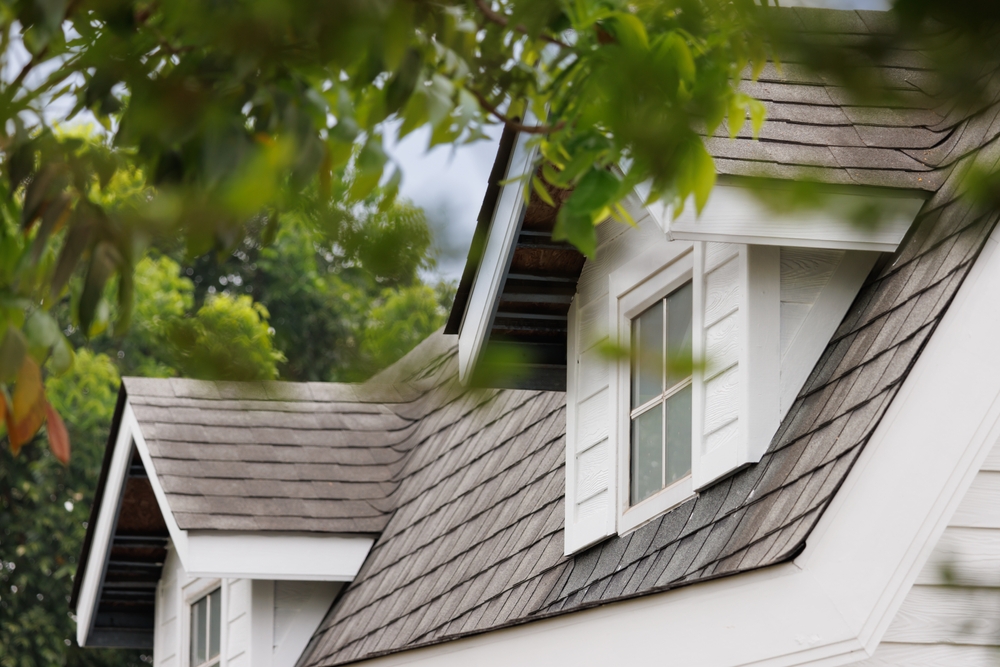
Synthetic shingles are also known as composite shingles, rubber shingles, or plastic shingles. They offer an attractive combination of durability, low maintenance, affordability, and eco-friendly sustainability. According to This Old House, the average cost of synthetic shingles in 2024 is between $1.00 and $7.00 per square foot, depending on the grade of the polymer.
The Eco-Friendly Materials in Synthetic Shingles
Synthetic shingles consist of advanced, engineered polymers mixed with recycled materials that include asphalt, wood, plastic, rubber, and laminate. They keep some less environmentally friendly roofing materials out of landfills and turn them into new roofing materials instead.
Durability of Synthetic Shingles
Synthetic shingles easily survive harsh outdoor environments. They withstand freezing temperatures and high heat, and they will not crack when exposed to fluctuating temperatures. Water runs off of them, and they also stand up under the pounding impact of hail stones. With the help of a sealant that protects them from UV rays, sunlight will not cause the color to fade, and these tiles will not warp.
Other Advantages of Synthetic Shingles
Lightweight synthetic shingles offer the look of a heavy cement or clay roof for homes that cannot support the weight of those materials. With modern manufacturing techniques, synthetic shingles come closer to mimicking asphalt shingles, wood shingles, cedar shakes, and more expensive roofing materials.
Disadvantages of Synthetic Shingles
On a highly visible or steeply sloped roof, an onlooker may notice the difference between a synthetic tile roof and a roof of the more expensive material the synthetic shingle is meant to mimic. For that reason, some homeowners use these tiles only on flat or low-pitched roofs.
Maintenance of Synthetic Shingles
All that is required to maintain synthetic shingles is to keep gutters and downspouts clear, prune overhanging limbs, remove debris from your roof, and replace missing or damaged shingles quickly. With this maintenance, these roofs can last 30 to 50 years in an ideal environment.
Choosing the Right Shingles
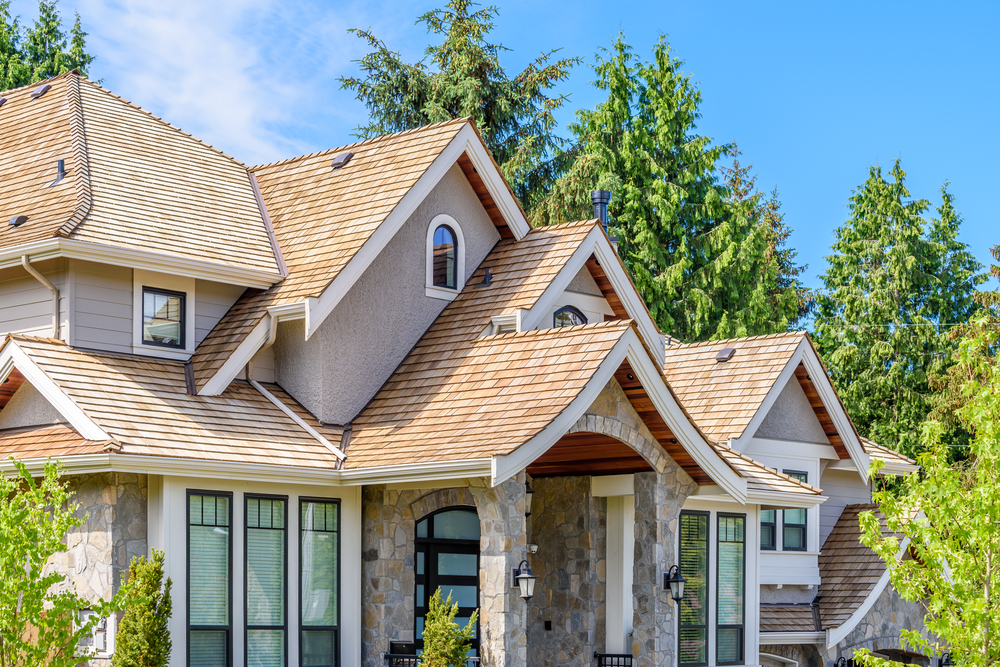
When deciding whether asphalt, wood, or synthetic shingles are best for your home, you should consider your home’s aesthetic, the shingle’s look, the climate, the pitch of your roof, and your budget.
Asphalt Shingles
Versatile asphalt shingles offer a variety of colors, low cost, relatively low maintenance, a classic look complementary to most home and roof styles, and easy installation and repair. These features make them the most frequently chosen roofing material.
On the other hand, if you live in an area with high winds, hail storms, excessive sun, or frequent shifts from freezing to thawing, asphalt shingles are not the best choice. Asphalt shingles are best for more moderate climates.
Wood Shingles and Cedar Shakes
Cedar shakes and wood shingles provide a rustic look that adds charm to farmhouses, saltbox roofs, cottages, and similar roof and housing styles. They withstand hail impacts and stay lying flat in gusty high winds.
These shingles, however, can be more expensive than asphalt or synthetic shingles. They are also not a good choice for damp or rainy climates. In areas with high humidity, they require a treatment and sealant every one to five years to protect them from cracks, rot, algae, and fungi.
Naturally, wood shingles are not recommended for areas prone to wildfires.
Synthetic Shingles
Eco-friendly synthetic shingles require less maintenance and offer more durability than asphalt or wood shingles. As long as they have a sealant that protects them from UV rays, these shingles do well in extreme weather climates. They also closely mimic the look of most roofing materials, even more expensive ones, in most situations.
If, however, you have a high-pitched roof or one that is highly visible, someone viewing your house from the street may be able to detect the difference between synthetic shingles and the materials you hoped to mimic. Consequently, synthetic shingles are a better choice for low-pitched or flat roofs than for high-pitched roofs.
Shingle Installation
The installation of your new roof will take one to seven days. Regardless of the roofing material you choose, the procedure follows the same general procedure.
After making the necessary preparations for the work, your roofer installs the roofing material. Next, the roofer installs flashing to cover where sections of the roof meet or where chimneys, vents, skylights, or dormers meet the roof. Your roofer installs the ventilation system that balances the flow of warm and cold air in your home last. Finally, your roofer cleans up the work site, inspects the roof, and discusses the warranty and documentation for the roof with you to finalize the process.
Shingle Maintenance and Repair
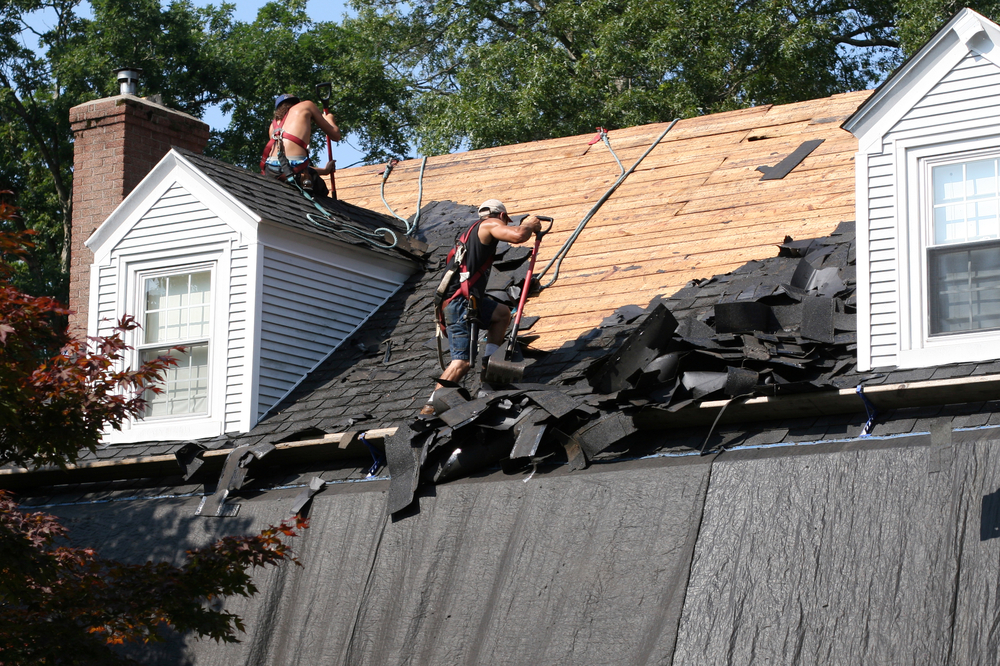
Some signs of shingle damage can be seen from the ground or inside your home. Others require a roofer to inspect the roof more closely.
You might see torn, curled, loose, cracked, or missing shingles or shingles that the wind from the ground has pulled up. Inside or outside your home, you may see water damage to exterior walls. Inside your home, you may see water damage to interior or exterior walls, the ceiling, or the attic floor if you have an attic.
A roofer should inspect your roof for less easily noticed damage, such as mold or fungi growth or insect damage to wood shingles, loose flashing, and small cracks or shingles that have just begun to loosen.
It’s important to have your roof inspected once a year to keep it in good condition and extend its life. Spring or fall are good times for an inspection. In the spring, your roofer can find damage done during the winter. In the fall, your roofer can remove fallen leaves and twigs and prepare your roof for the winter.
